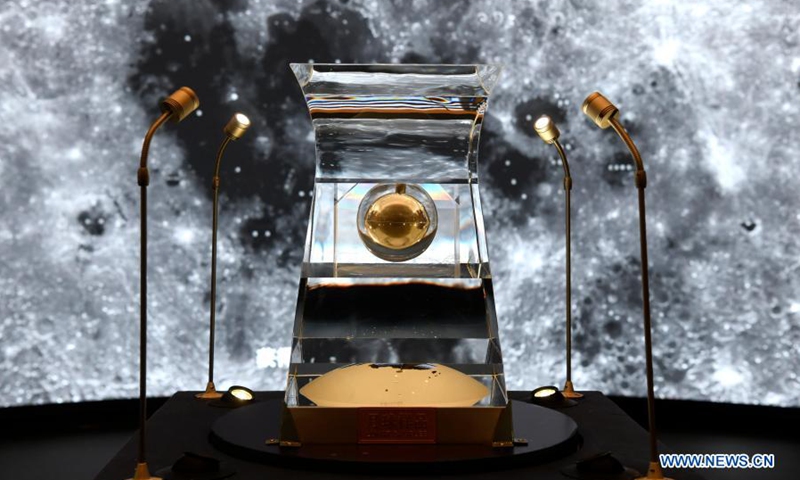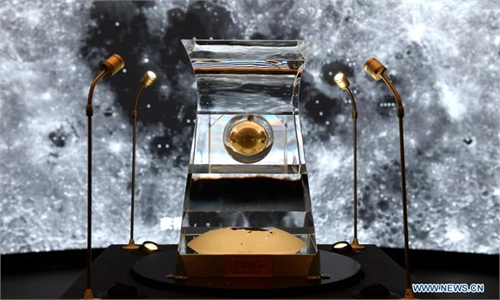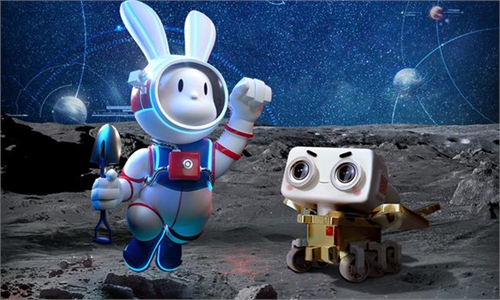Chinese scientists find high water content in lunar soil samples brought back by Chang'e-5 mission

The lunar samples No. 001 brought back by China's Chang'e-5 probe is displayed at the National Museum of China in Beijing, capital of China, Feb. 27, 2021. An exhibition displaying the lunar samples No. 001 brought back by China's Chang'e-5 probe is held here on Saturday.(Photo: Xinhua)
Chinese scientists' research showed the lunar soil samples brought back by the Chang'e-5 mission contain high content of water originated from solar wind.
The formation and distribution of lunar surficial water remains ambiguous despite that remote sensing data show the prominence of water (OH/H2O) on moon surface, due to the lack of direct evidence from sample analysis.
Latest research on the lunar soil samples brought back by the Chang'e-5 mission conducted by the scientific research team from the Institute of Geochemistry, Chinese Academy of Sciences, showed that the surface of the lunar soil samples contains high content of water attributed to solar wind implantation.
Through the analyses by infrared spectroscopy (FTIR) and nanoscale secondary ion mass spectrometry (NanoSIMS), the scientists estimated a minimum of 170 ppm water content attributed with solar wind proton implantation in lunar soils.
The results of spectral and microstructural analyses indicate that the formation and storage of solar wind-derived water are affected by exposure time, crystal structure, and mineral composition of the minerals.
The research verified that minerals in lunar soils are an important reservoir of water and provides an important reference for the distribution of surficial water in middle latitude of the Moon.
The research results have recently been published on the international scientific journal Nature Communications.
Global Times


